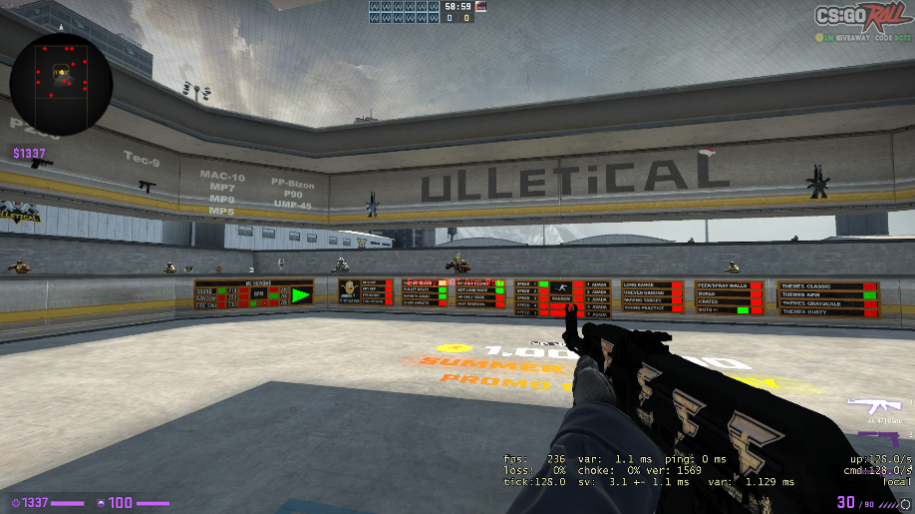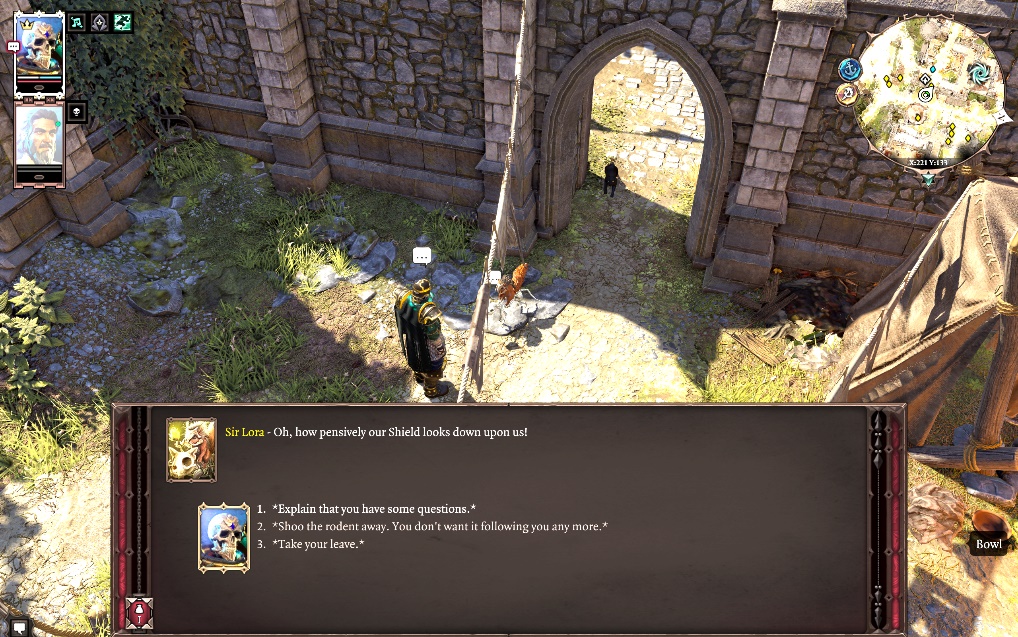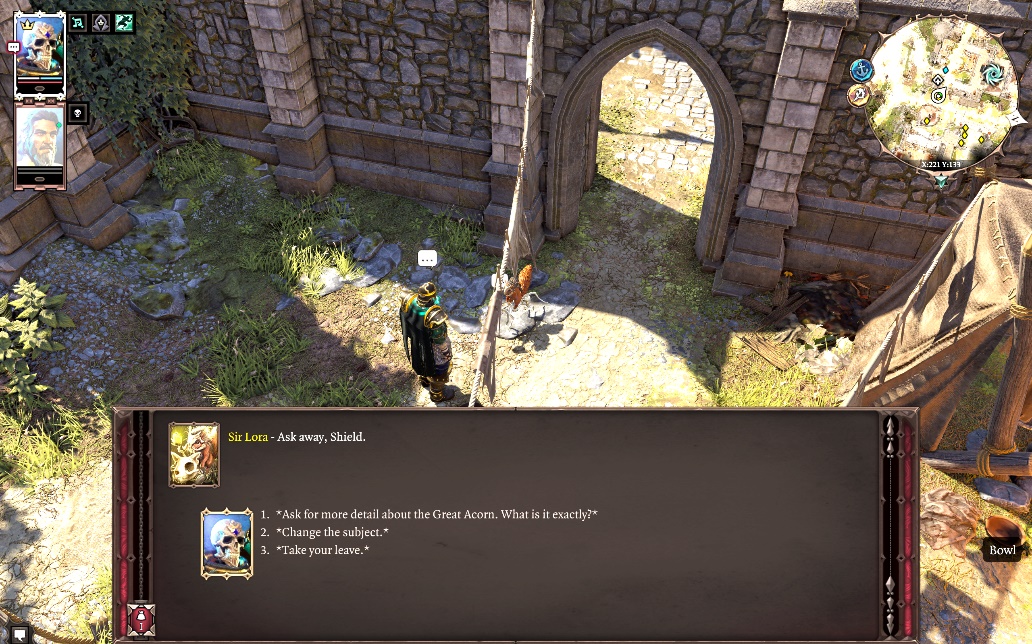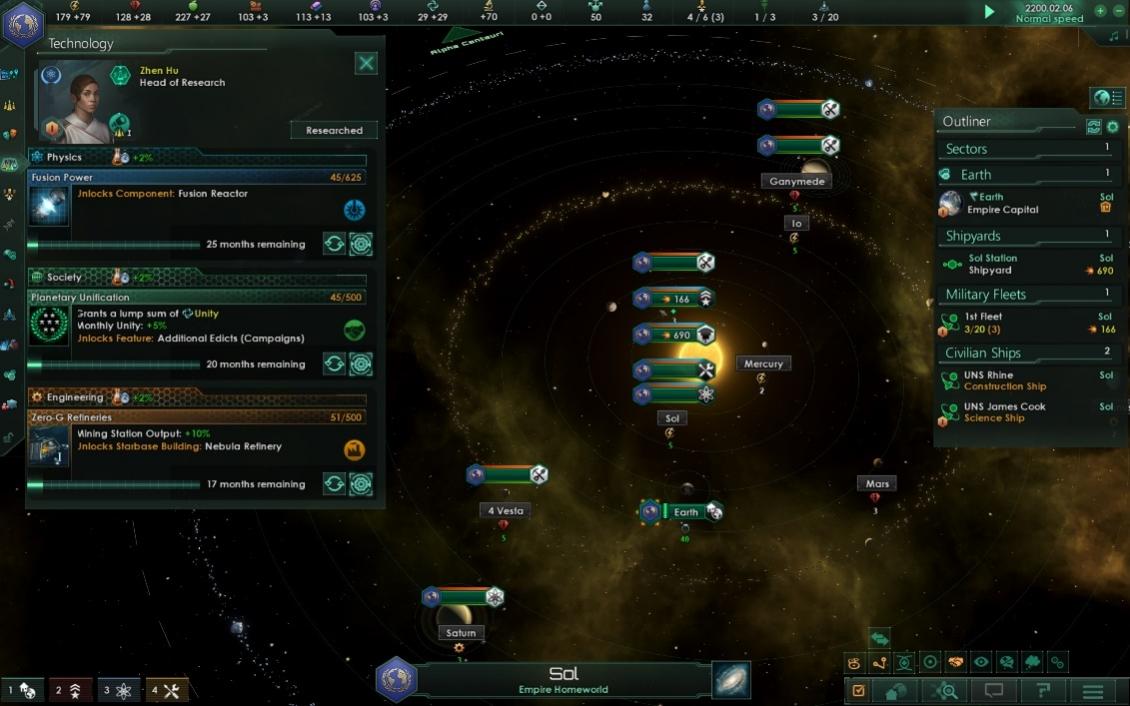1. Introduction
Since the birth of AI, its theory and technology have become increasingly mature, its application field has also been expanding, and its application in games has also been extremely extensive. For players, the advancements in AI have brought about a plethora of exciting and sophisticated games [1]. Traditional game playing methods have been revolutionized with the introduction of intelligent agents powered by AI. These agents can analyze player behavior, adapting to changing circumstances, and providing challenging gameplay. By simulating human-like decision-making processes and learning from past experiences, AI-driven game agents offer players engaging and immersive experiences that were previously unimaginable.
Moreover, AI has played a pivotal role in game generation, allowing developers to create vast and dynamic virtual worlds. Procedural generation techniques, coupled with AI algorithms, enable the automatic creation of game content such as landscapes, characters, quests, and narratives. This not only saves time and resources for developers but also ensures that each player's gaming experience is unique and tailored to their preferences [2]. Furthermore, AI has been instrumental in enhancing the overall game experience. Through natural language processing and computer vision techniques, AI enables more interactive and intuitive gameplay. Voice commands, gesture recognition, and facial expression analysis have become common features, elevating the level of player immersion. Additionally, AI-powered recommendation systems provide personalized game recommendations based on individual preferences and playing habits, ensuring that players discover new games that align with their interests.
The application of AI in the gaming industry holds immense potential and research significance. As AI technology continues to advance, we can expect even more innovative applications in game development. Enhanced AI-driven game agents will provide increasingly challenging and realistic opponents, pushing players to their limits and fostering skill development. Additionally, the use of AI in game design and content generation will lead to limitless possibilities, unlocking new levels of creativity and novelty.
The purpose of this study is to explore the application of artificial intelligence in the field of games, and analyze its potential application prospects and research significance. The specific contents include the methods and technologies of game intelligent agent, game generation and game experience enhancement.
2. What is Artificial Intelligence
Artificial intelligence (AI) refers to the scientific and technological field that enables machines to perform complex cognitive tasks and intelligent behaviors by simulating human intelligence. It involves multiple disciplines, including machine learning, computer vision, natural language processing, expert systems, and so on.
The goal of artificial intelligence is to enable computer systems to simulate and implement various aspects of human intelligence, such as perception, understanding, learning, reasoning, decision-making, and interaction [3]. It relies on a large amount of data and algorithms, and utilizes these data and algorithms to train and optimize models to achieve intelligent tasks and functions.
Artificial intelligence can be applied in various fields, such as robotics, autonomous driving, voice assistants, image recognition, intelligent recommendation systems, etc. Its development and application have brought significant changes and innovations to many industries, improving production efficiency, user experience, and potentially solving some major challenges and problems. In this article, we will explore the application of artificial intelligence in different types of games and explore its impact on gaming experience and interactivity.
3. Application of artificial intelligence in first person shooter (FPS) games
First person shooter games, such as the Call of Duty series and the Battlefield series. In traditional first person shooter games, enemy characters typically have fixed behavior patterns and predetermined paths. With the help of artificial intelligence technology, current game developers can create more intelligent enemy characters, enabling them to have more realistic behavior and decision-making abilities. These intelligent enemies can autonomously choose the best tactics, utilize the environment to evade player attacks, and even learn and adapt to player tactics to provide greater challenges [4]. Players will face more challenging enemies and need to adopt more strategic combat methods to overcome them.
In FPS games such as CSGO, we will face many enemies that are also operated by players or AI enemies controlled by computers (Figure 1). The map is full of complex corridors, buildings and obstacles, so how to make the enemies or players quickly and accurately reach the target area or cover point is a difficult problem. In this context, path planning algorithm is proposed to solve the problem. The Dijkstra algorithm is the basic movement of AI enemies can be planned by. When AI characters need to move to a target location, the Dijkstra algorithm can be used to determine the shortest path.
With the advancement of artificial intelligence technology, game developers can not only give characters intelligent actions, but also endow them with emotional responsiveness. In first person shooter games, players' choices and behaviors can trigger different emotions and reactions in their characters [5]. Through emotion recognition technology, AI characters can respond emotionally to players' actions, attitudes, and language, such as anger, joy, or fear. This increase in interactivity makes the game more profound and immersive, allowing players to establish closer emotional connections with virtual characters.

Figure 1. FPS games [4]
4. Application of Artificial Intelligence in Role playing Games (RPGs)
Role-playing games, such as the "The Elder Scrolls" series and the "The Witcher" series. In role-playing games, if players want to experience rich game scenarios, they must have a sense of substitution for the roles they control, which is based on the world view and interaction with others. In traditional role-playing games, the dialogue between players and virtual characters is usually based on predetermined options or fixed scripts. Now, with the help of natural language processing and machine learning technology, artificial intelligence can enable virtual characters to have more intelligent dialogue abilities [6]. They can understand players' questions, provide corresponding answers, and make decisions based on the content of the conversation. This intelligent dialogue system makes the interaction between players and game characters more natural and smooth, enhancing the immersion of the game. For example, NPC conversations can be added to the interface of ChatGpt to create three-dimensional characters with corresponding background stories and character images.
For example, in the game "Diversity: Original Sin 2", Sir Lora is an NPC responsible for following the protagonist until the final chapter of the game, players can learn many basic world view settings from their conversations with him, so that players can have a basic understanding of the game content and a deeper level of substitution into the game. For example, the following figure 2 and figure 3

Figure 2. the Interactive schematic diagram of Diversity: Original Sin 2 [6]
If ChatGPT is integrated into NPC dialogues, players can inquire about any unfamiliar elements (such as the "Black Ring Cult," "Holy Order of Knights," "Purifying Source Mage Guild," and other game settings) and ask for guidance regarding their personal gaming experience (e.g., "Where should I go next?" or "What should I do?"). In this case, the dialogue options are not limited to pre-defined choices but can be expanded to include responses through keyboard input. Based on its character model, GPT can provide relevant answers accordingly.

Figure 3. The interactive schematic diagram from GPT [6]
In this particular scene of rescuing the elf, players can make different requests to him. For example, they can ask the elf to provide instructions on how to escape from Joyful Keep (the prison where players are held captive) or ask him to describe specific methods for escaping. They can also inquire about the elf's life story, adding depth and completeness to the character portrayal of Amiro, the elf. These dialogues contribute to a more vivid and well-rounded characterization of the elf, Amiro.
Artificial intelligence technology has also brought innovative plot generation to role-playing games. In the past, game storylines were usually predetermined, but now artificial intelligence can generate dynamic storylines that adapt to player behavior and choices by analyzing a large amount of game data and algorithm models. For example, record players' choices in different tasks, interaction with NPC, moral decisions, etc. to build a scenario generation model based on players' behavior [7]. Using natural language processing technology, a large number of game dialogue texts can be analyzed and modeled to generate realistic NPC dialogues and plot development. According to the players' behavior patterns and decisions in the past games, predict their possible choices in the future, and generate personalized plots for them.
In addition, artificial intelligence can also be used to create realistic virtual worlds. In RPG games, game developers typically need to design and build a massive virtual world that includes rich elements such as terrain, biology, and climate. AI can generate realistic virtual scenes and characters by learning and analyzing a large amount of game data and images. By utilizing technologies such as generative adversarial networks (GAN), AI can automatically generate detailed and realistic maps, monsters, and NPC characters, presenting players with a more realistic and exciting gaming world.
5. Application of Artificial Intelligence in Strategy Games
Firstly, artificial intelligence can play the enemy role of intelligence. In traditional strategic games, enemy characters are usually controlled by game programs, and the introduction of AI can enable enemy characters to have more intelligent behavior. AI can achieve higher levels of gameplay by learning and simulating the strategies and decisions of top players, thereby engaging in more exciting and intense battles with players [8]. AI can respond accordingly based on game status and player strategies, providing a more realistic and challenging gaming experience.
Secondly, artificial intelligence can provide players with intelligent assistants. In strategy games, players need to make a lot of decisions and plans, and AI can provide real-time advice and assistance to players by analyzing game status and player behavior. AI can evaluate different strategy choices and provide the best decision suggestions to help players develop more effective strategies and tactics. Such intelligent assistants can enhance players' strategic awareness and decision-making ability, increase the challenge and fun of the game [9].
For example, in the game "Stellaris", AI assistants help players coordinate the development of the entire empire in the direction that players want to develop (such as: strengthening the direction of technology, finding stars and colonizing). For example, explain the rules, mechanisms and basic operations of the game to help players understand the core elements of the game. To help players plan scientific and technological development, allocate resources to build spaceships and explore the universe, it can also provide practical game skills and suggestions, such as how to expand territory, manage resources, develop technology, etc., to help players develop effective game strategies (Figure 4).

Figure 4. Game strategy and exploration guide: interactive schematic diagram [10]
In addition, artificial intelligence can also be used to improve game balance. In some strategic games, different characters or units may have balance issues, where certain characters are too strong or too weak, which affects the fairness and playability of the game. AI can help development teams evaluate and optimize game balance by simulating a large number of combat scenarios and conducting data analysis and optimization. AI can identify potential problems and improve space, and provide targeted suggestions and solutions to improve the balance and fairness of the game [11].
6. Current issues with the use of AI
At present, although AI has been widely used by a large number of games, there are many problems and challenges at the same time.
• When the AI algorithm is applied in the game, it may consume a large amount of computing resources, which will cause the operating system to allocate less resources to the game itself, leading to a decline in the performance of the game, such as a decline in the frame rate or an increase in latency.
• AI characters in the game need to be able to simulate human behavior, decision-making and reaction, and have appropriate emotional expression ability, so that players can get a more immersive experience, which is a challenge to AI computing model, and it is difficult to create a completely real experience.
• AI learning strategies are usually based on fixed scenes and rules, but they often face a large number of different levels and maps in the game, which requires AI to adapt quickly.
• The application of AI may affect the balance of the game. If the AI character is too powerful or intelligent, the player's experience will be greatly reduced.
• AI will process a large amount of player data in the game, such as personal information and game data. If these information falls into the hands of criminals, it may pose a threat to people's property safety and personal safety. Therefore, game companies should take measures to protect players' data and prevent it from being disclosed and abused by hackers.
7. Conclusion
The application of AI in the field of games shows great potential and innovation. This paper mainly discusses the application of AI in games, and summarizes the characteristics of different types of game applications. In FPS games, AI can help the enemy to plan the path and make the enemy more intelligent. In RPG games, AI can use a large number of game data and algorithm models to generate dynamic scenarios and provide personalized and adaptive game experience. In strategy games, AI helps players gain advantages or create stronger enemies in the game by analyzing players' behaviors and strategies, providing tactical suggestions and optimizing resource management. In MOBA games, AI can learn how players play to create more intelligent and powerful enemies. In the future, we can expect more possibilities for the development of AI in the field of games. With the progress of technology, AI is expected to adapt to different types of games more intelligently and intelligently, and provide more personalized and innovative game experience. At the same time, AI can also be combined with technologies such as augmented reality and virtual reality to create a more realistic and immersive game environment. However, we also need to pay attention to the rational application of AI in games to avoid excessive dependence and abuse. At the same time, with the development of AI, we also need to pay attention to ethical and moral issues in games to ensure that the application of AI conforms to social values and laws and regulations.
References
[1]. Bowen, B., Ingmar, K., Todor, M., Yi, W., Glenn, P., Bob, M., & Igor, M. (2020) Emergent Tool Use From Multi-Agent Autocurricula, International Conference on Learning Representations, abs/1909.07528.
[2]. Georgios N., Y., & Julian, T. (2018) Artificial Intelligence and Games., ACM Conference on Human Factors in Computing Systems 1-291.
[3]. Kai, A., Marc Peter, D., Miles, B., & Anil Anthony, B. (2017) Deep Reinforcement Learning: A Brief Survey., IEEE Signal Processing Magazine, 34.6: 26-38.
[4]. Jiang, N., Zhai, Y. (2007) Game design of self automation based on artificial neural nets and genetic algorithms, Journal of Computer Applications, 27.05: 1280-1282.
[5]. Luo, X. (2006) The Realization of Shortcut Search and Its Algorithm Optimization, Computer Knowledge and Technology: 183-185.
[6]. https://divinity.game/.
[7]. Chengmei, T., Yongquan, Z., Zhonghua, T., & Qifang, L. (2021) Teaching-Learning-Based Pathfinder Algorithm for Function and Engineering Optimization Problems, Applied Intelligence, 51.7: 5040-5066.
[8]. Fabrizio, B., & Costantino, G. (2017) Affective Classification of Gaming Activities Coming from RPG Gaming Sessions., International Conference on E-learning and Games, 10345.: 93-100.
[9]. Stuart J., R., & Peter, N. (2009) Artificial intelligence: a modern approach, Artificial Intelligence, 9.2: 215-218.
[10]. https://www.paradoxinteractive.com/games/stellaris/about.
[11]. José, H., Marco, B., Jordi, B., Nader, C., David L., D., Katja, H., Fernando, M., Claes, S., & Kristinn R., T. (2017) A New AI Evaluation Cosmos: Ready to Play the Game?, AI Magazine, 38.3: 66-69.
Cite this article
Zhou,X. (2024). The application of artificial intelligence in the game field. Applied and Computational Engineering,42,83-89.
Data availability
The datasets used and/or analyzed during the current study will be available from the authors upon reasonable request.
Disclaimer/Publisher's Note
The statements, opinions and data contained in all publications are solely those of the individual author(s) and contributor(s) and not of EWA Publishing and/or the editor(s). EWA Publishing and/or the editor(s) disclaim responsibility for any injury to people or property resulting from any ideas, methods, instructions or products referred to in the content.
About volume
Volume title: Proceedings of the 2023 International Conference on Machine Learning and Automation
© 2024 by the author(s). Licensee EWA Publishing, Oxford, UK. This article is an open access article distributed under the terms and
conditions of the Creative Commons Attribution (CC BY) license. Authors who
publish this series agree to the following terms:
1. Authors retain copyright and grant the series right of first publication with the work simultaneously licensed under a Creative Commons
Attribution License that allows others to share the work with an acknowledgment of the work's authorship and initial publication in this
series.
2. Authors are able to enter into separate, additional contractual arrangements for the non-exclusive distribution of the series's published
version of the work (e.g., post it to an institutional repository or publish it in a book), with an acknowledgment of its initial
publication in this series.
3. Authors are permitted and encouraged to post their work online (e.g., in institutional repositories or on their website) prior to and
during the submission process, as it can lead to productive exchanges, as well as earlier and greater citation of published work (See
Open access policy for details).
References
[1]. Bowen, B., Ingmar, K., Todor, M., Yi, W., Glenn, P., Bob, M., & Igor, M. (2020) Emergent Tool Use From Multi-Agent Autocurricula, International Conference on Learning Representations, abs/1909.07528.
[2]. Georgios N., Y., & Julian, T. (2018) Artificial Intelligence and Games., ACM Conference on Human Factors in Computing Systems 1-291.
[3]. Kai, A., Marc Peter, D., Miles, B., & Anil Anthony, B. (2017) Deep Reinforcement Learning: A Brief Survey., IEEE Signal Processing Magazine, 34.6: 26-38.
[4]. Jiang, N., Zhai, Y. (2007) Game design of self automation based on artificial neural nets and genetic algorithms, Journal of Computer Applications, 27.05: 1280-1282.
[5]. Luo, X. (2006) The Realization of Shortcut Search and Its Algorithm Optimization, Computer Knowledge and Technology: 183-185.
[6]. https://divinity.game/.
[7]. Chengmei, T., Yongquan, Z., Zhonghua, T., & Qifang, L. (2021) Teaching-Learning-Based Pathfinder Algorithm for Function and Engineering Optimization Problems, Applied Intelligence, 51.7: 5040-5066.
[8]. Fabrizio, B., & Costantino, G. (2017) Affective Classification of Gaming Activities Coming from RPG Gaming Sessions., International Conference on E-learning and Games, 10345.: 93-100.
[9]. Stuart J., R., & Peter, N. (2009) Artificial intelligence: a modern approach, Artificial Intelligence, 9.2: 215-218.
[10]. https://www.paradoxinteractive.com/games/stellaris/about.
[11]. José, H., Marco, B., Jordi, B., Nader, C., David L., D., Katja, H., Fernando, M., Claes, S., & Kristinn R., T. (2017) A New AI Evaluation Cosmos: Ready to Play the Game?, AI Magazine, 38.3: 66-69.









